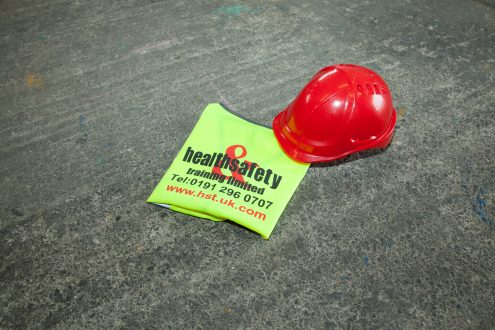How to Avoid Injury on a Building Site
The world of construction is an exciting and fast-paced one, but a construction site can be a very dangerous place if the right health and safety concerns and regulations are not adhered to.
Almost everyone knows of the recent crane collapse in Brazil at the new stadium, which has served to bring these issues to the forefront. However, it is possible to work perfectly safely on a construction site, seeing the new building soaring ever higher, with each and every worker returning safely to his or her loved ones every night.
Every building site or construction job should have a written risk assessment which should be made available to all the workers who request it. For those who cannot be bothered to wade through pages of detail, their managers should break down the relevant points to each group of workers: for example, scaffolding workers should acknowledge the need to wear safety harnesses when working at great heights. If each worker understands how and why the specific recommendations will keep them safe on the site they are more likely to co-operate than if they are just told to ‘wear this’.
Fatal Injuries
Some of the injuries that can be incurred on a building site are caused from falling from high places. While a fall of one story may not kill, a fall from seven stories high almost certainly will. In order to prevent serious injury and even death, the workers must undergo training to teach them about the consequences of taking chances while working high above the ground.
Other common injuries in construction areas are from things falling down unexpectedly – a piece of scaffolding, a pile of planks, even a hammer or a single brick can be devastating if someone happens to be underneath it. Any areas where items may fall is a risk, and should be cleared of people whenever a fresh load of supplies is sent up, and no one should re-enter the area until confirmation comes down that the goods are safely away from the danger area. Smaller items falling can be protected against by always wearing a hard hat while in the confines of the site.
Safety Clothing
When on site, the appropriate safety clothing should always be worn; no exceptions. A hard hat protects the head from small objects and debris falling and causing head injuries, high-visibility jackets and trousers ensure that everyone can be seen easily, even in the gloom of a half-finished, unlighted building and safety boots to keep bricks, planks and pipes from crushing vulnerable toes are the standard wear on construction sites all over the country.
Remember at all times that even the biggest, burliest construction workers are vulnerable to injury, especially when compared to the immense machinery that effortlessly scoops and lifts tonnes of rubble and container-loads of building supplies. Being caught between two of these machines can have horrific consequences.
Notwithstanding how detailed and thorough the risk assessment is, accidents do happen, especially in places like building sites where there is a lot of action and movement going on. Minimise the impact of the occasional accident by having a clear and easy to understand plan of action. First aiders (more than one, what if it is the designated first aider that is injured?) should be ready to spring into action, knowing exactly where the first aid kit is and how to call for help if the injury is beyond their capability to deal with. Prompt action by first responders can often ensure that minor incidents don’t become major accidents. It is best if everyone on the site has some form of basic first aid training and knows what to do in an emergency, from management to the newest recruit.
Fatigue
Finally, everyone on site must understand the dangers of working when exhausted. It is understandable and forgivable to want to put on a big push to meet a deadline and possibly earn an early completion bonus, but not at the risk of the health and safety of the workers. If the construction workers are asked to work excessively long hours for extended periods of time, they will, almost certainly, begin to neglect ‘fiddly annoyances’ like wearing safety harnesses and using machinery safety guards. These lapses can kill.
The best way to keep everyone on site safe and healthy as the work progresses smoothly is to ensure that everyone fully understands the rules and regulations of the site and why they have been put in place. Make the time and find the funds to have a professional risk assessor come in and train the workers in basic health and safety issues and accident prevention training – the outlay will be more than worth it when you have a smoothly running site and happy, healthy workers, ready and able to get cracking on your next project!
5 Reasons Fire Drills are Essential for Every Business HST Newsletter: Winter 2014





